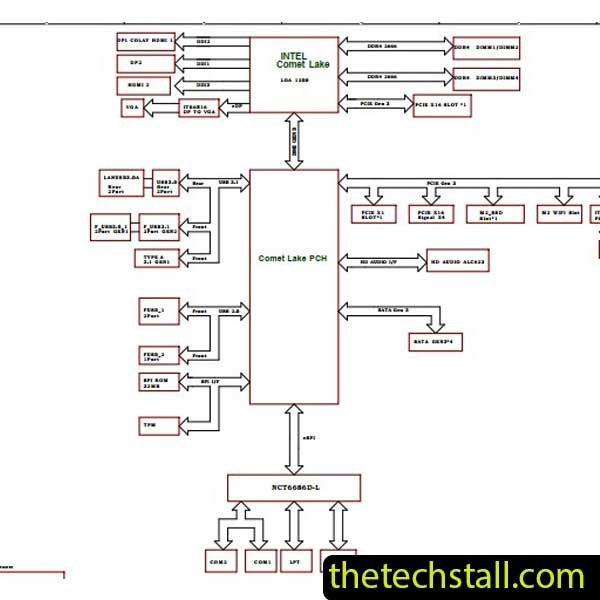
When it comes to laptop repairs, especially with a robust machine like the Lenovo ThinkCentre M70s, understanding the motherboard is crucial. The M70s is known for its reliability, but like all laptops, it can face hardware issues over time. One of the most effective tools for diagnosing and fixing these issues is the I470MS V1.0 Schematic Diagram. In this blog post, we’ll walk you through mastering motherboard fixes using this schematic, ensuring your M70s runs smoothly for years to come.
The ThinkCentre M70s is a powerhouse designed for professionals. With its high-performance specs, durable build, and security features, it’s a favorite among business users. However, as with any electronic device, it’s not immune to problems such as power issues, short circuits, and component failures. That’s where the I470MS V1.0 schematic diagram comes into play.
The I470MS V1.0 is the schematic diagram for the Lenovo ThinkCentre M70s’s motherboard. This diagram is a blueprint that details every component, connection, and circuit on the motherboard. Understanding this schematic is vital for anyone looking to perform repairs or diagnose issues on their M70s.
Before diving into the schematic, it’s important to know the common issues that users face with the M70s motherboard:
Start by diagnosing the issue. Is your M70s not powering on? Is it overheating? Once you have a basic understanding, you can refer to the relevant section of the I470MS V1.0 schematic.
Using the schematic, find the component that might be causing the issue. For example, if the laptop isn’t powering on, check the power supply section of the schematic.
Use a multimeter to test the identified component. For example, check for continuity, voltage levels, and resistance. Compare these readings with what’s expected according to the schematic.
If the component is faulty, replace it with a new one. If it’s a minor issue, like a loose connection, simply repairing it might resolve the problem.
After making the necessary repairs, reassemble the laptop and test it thoroughly to ensure the issue is resolved.
Mastering the Lenovo ThinkCentre M70s motherboard repairs using the I470MS V1.0 schematic diagram can save you time, money, and the frustration of a malfunctioning laptop. Whether you’re a professional technician or a DIY enthusiast, this schematic is your roadmap to successful repairs. By understanding the motherboard at this level, you ensure that your ThinkCentre M70s remains a reliable companion for all your computing needs.
If you found this guide helpful, don’t forget to share it with your fellow tech enthusiasts! And if you have any questions or need further assistance, drop a comment below. Happy repairing! Join here to get help from the tech stall support team
Share with friends
thetechstall.com would like to share with you all the resources you need to repair desktop and laptop motherboards for free.
Developed By: Ibrahim Hossen